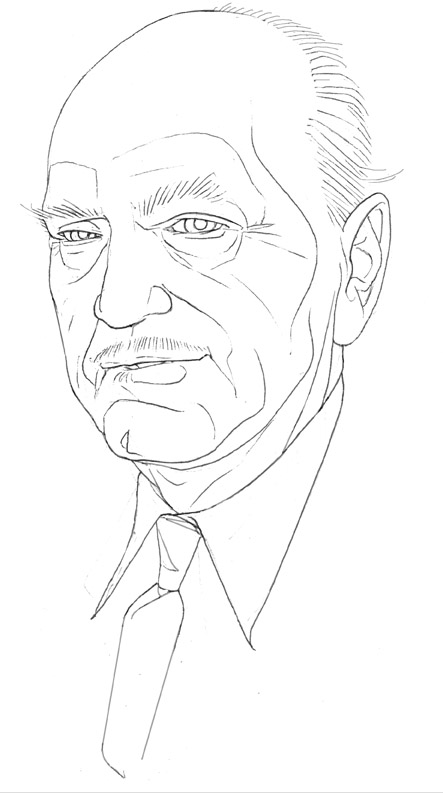Today we commemorate Robert A. Heinlein, who was born on this day in 1907. He is a giant in the science fiction genre, but like most giants, his path to literary greatness was tangled and circuitous. His naval career ended in the 1920s when tuberculosis scarred his lungs. He attempted real estate and silver mining, ran for political office in California, and only began writing to make a mortgage payment. His first story, “Life-Line,” was published in the August 1939 issue of Astounding Science Fiction, after Heinlein realized that Astounding paid more than the prize money for the contest he had originally entered. This began a long relationship with Astounding’s editor, John W. Campbell, who published much of Heinlein’s work through the 1940s.
When the second World War began, Heinlein went to Philadelphia to work as a civil engineer, recruiting L. Sprague de Camp and Isaac Asimov, as well as his future wife, Virginia Gerstenfeld. (She would become his first reader and later suggested he write a story about a human raised on Mars.) Even after his writing career took off, he devoted much of his time to stonemasonry. Throughout all of these pursuits, he used his writing to question social mores and explore ways humanity could create an interesting future for itself.
Heinlein’s writing career spanned four decades. He was invited to comment on both the moon landing (alongside Arthur C. Clarke and Walter Cronkite) and the use of space technology to advance medical care for the elderly. He won Hugos for Double Star, Starship Troopers, Stranger in a Strange Land, and The Moon is a Harsh Mistress, and was nominated for both Hugos and Nebulas for several other works. In 1976 he was awarded the first Grand Master Nebula for Lifetime Achievement by the Science Fiction Writers of America, which later became The Damon Knight Memorial Grand Master Award, now awarded by the Science Fiction and Fantasy Writers of America. He continued to produce nuanced and controversial work until his death in 1988, despite prolonged periods of illness.
However, what truly makes Heinlein one of the great, foundational figures of modern science fiction is his intellectual curiosity, and his willingness to question life and society through his writing. His work in social science fiction was informed by a complex response to culture, and he insisted on following his ideas wherever they took him—even when that meant going against popular opinion or risking book sales. While Starship Troopers was a conservative reaction to nuclear development that stressed social responsibility and militarism verging on fascism, Stranger in a Strange Land focused on progressive stances toward religion and sexuality that were embraced by the counterculture of the 1960s.
The Moon is a Harsh Mistress investigated rational anarchy and polyandry, and The Number of the Beast looked at the idea of the “World as Myth,” which posits that fictional realms imagined by writers become as much a part of the multiverse as “real” ones—and allowed Heinlein’s characters to visit Barsoom and Oz. He gave the world the concept of grokking, which was useful enough to gain traction in both the hippie and computer programming communities during the 1960s and 70s. He also popularized the acronym TANSTAAFL (“There Ain’t No Such Thing As a Free Lunch”) and promoted the social philosophy of “paying it forward,” which is now one of the cornerstones of The Heinlein Society.
In short, he used his creative work to question the world around him and dream up new ones to explore, and he invited all of us to come along.
This article was originally published July 7, 2013.










